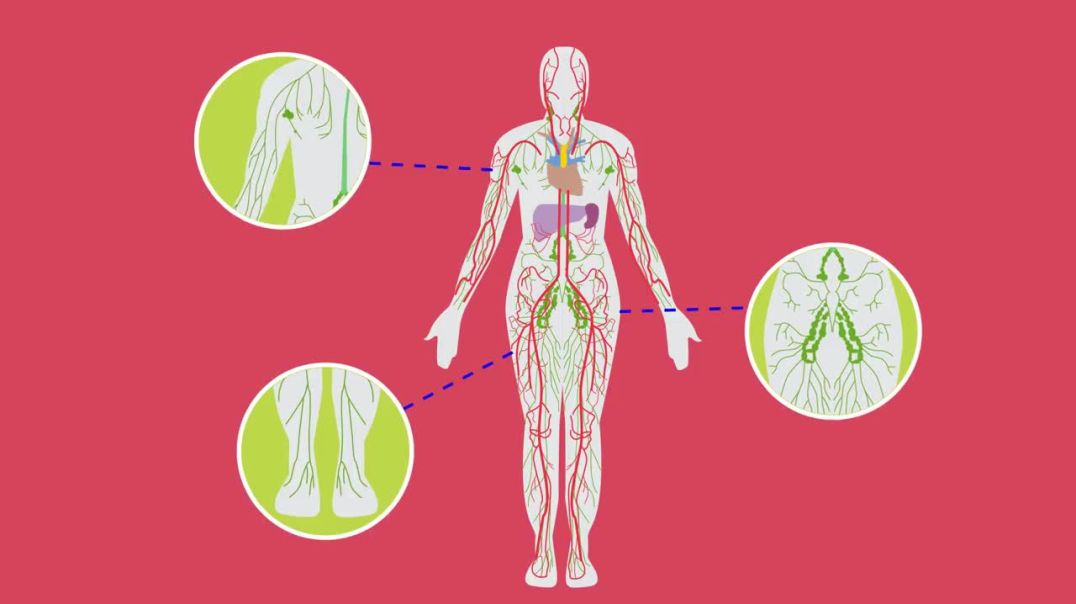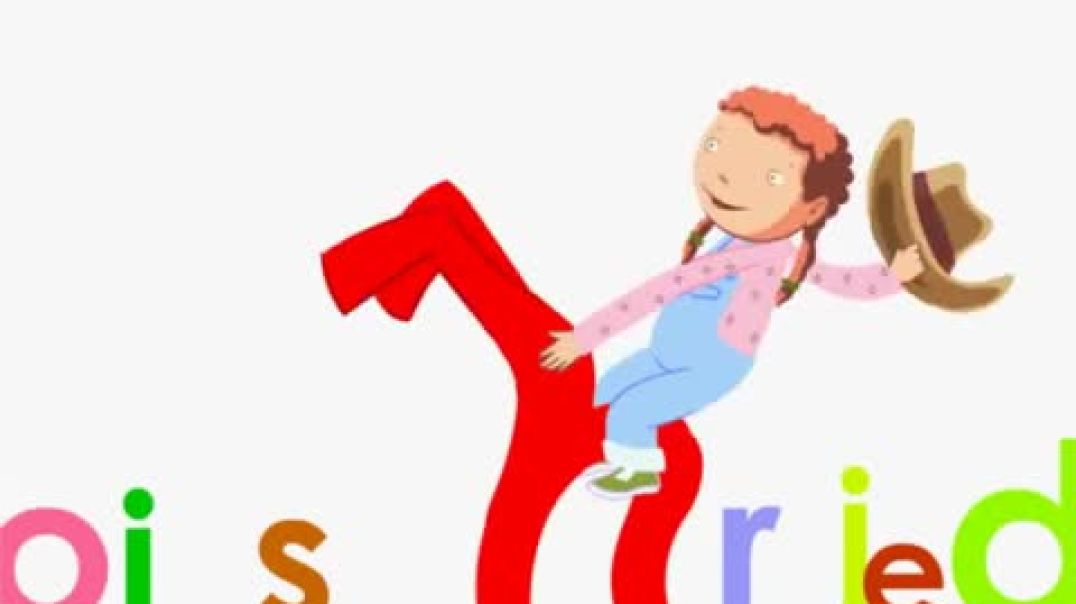Video hàng đầu
A predator is an animal that hunts, kills and eats other animals for food. Prey are the animals that predators kill for food. In a food chain, if the population of prey increases, there will be more food available for the predator, which results in the population of the predator increasing.
The lymphatic system is a network of delicate tubes throughout the body. It drains fluid (called lymph) that has leaked from the blood vessels into the tissues and empties it back into the bloodstream via the lymph nodes. The main roles of the lymphatic system include: managing the fluid levels in the body.
The immune system responds to antigens by producing cells that directly attack the pathogen, or by producing special proteins called antibodies. Antibodies attach to an antigen and attract cells that will engulf and destroy the pathogen. The main cells of the immune system are lymphocytes known as B cells and T cells.
Phonics involves matching the sounds of spoken English with individual letters or groups of letters. For example, the sound k can be spelled as c, k, ck or ch. Teaching children to blend the sounds of letters together helps them decode unfamiliar or unknown words by sounding them out.
#kindergarten #grade1 #math #even #odd
This video teaches children about even and odd numbers!
0:08 Question 1
0:33 Question 2
0:58 Question 3
1:23 Question 4
1:49 Question 5
2:14 Question 6
2:39 Question 7
3:08 Question 8
3:34 Question 9
3:59 Question 10
------------------------------
Most gas exchange surfaces are extremely thin (sometimes just one cell thick), ensuring a short diffusion pathway across the exchange surface. They will also have a large surface area to volume ratio which provides more space for the diffusion of gases.
Your favourite thing or person of a particular type is the one you like most.
Pop'n'Olly - PopnOlly - Pop N Olly | What is Discrimination?
In this video we discover what discrimination means and provide a few examples. We also talk about discrimination and the law.
www.popnolly.com
Twitter @popnolly
Instagram @popnollyUK
Facebook Pop'n'Olly
GoFundMe: http://www.gofundme.com/popnolly
#AdjectivePhrase
This video is part of a playlist having the following videos. Watch all of them in sequence for a better learning experience.
Enjoy learning :)
Video No.1: What is the Difference Between a Sentence and a Phrase?
https://youtu.be/ZsvJ3InLslo
Video No.2: Noun Phrase And Its Functions
https://youtu.be/ez6NPJYRKoA
Video No.3: Noun Phrase and Verb Phrase
https://youtu.be/pHZho4qUX5U
Video No.4: Prepositional Phrase
https://youtu.be/fo839aHCPr8
Video No.5: Adjective Phrase
https://youtu.be/S1jAzcApTpE
Video No.6: Adverbial Phrase
https://youtu.be/vnVtWhTRXUo
Video No.7: What is a Clause? ( Part 1)
https://youtu.be/LFBT4Qc4Vig
Video No.8: Types Of Clauses-Independent And Dependent
https://youtu.be/S__5dK67bHc
Video No.9: Types Of Dependent Clauses
https://youtu.be/_aQWQTot8II
Topics Covered:
Adjective phrases
Predicative adjectives phrase
Attributive adjective phrase
I hope you liked our video.
Kids should spend time watching informative videos and expand their knowledge day by day.
Kids retain what they see in audio-visual lessons so make them watch informative videos rather than cramming things.
If you want to learn any topic, please free to write to us, we will upload the video to help you out as soon as possible.
We can also create a customized u tube playlist for the topics you want to learn.
Your feedback is important to us.
Stay connected with us:
tutwayhelpdesk@gmail.com
YouTube: https://www.youtube.com/channe....l/UCL-KeqwBmYvEBpAiU
Facebook: https://www.facebook.com/tutway/
https://www.tutway.com/
About us:
Welcome to Tutway.
A unique platform where learning is fun.
Now there is no distinction between kids’ fun time and study time.
At Tutway, we believe in a very simple idea that audio-visual learning is the most effective tool for grasping knowledge. Many researchers have proven that kids learn a lot by playing interactive games and watching audio-visual animated lessons as compared to reading from books.
That's when Tutway comes to the rescue.
Tutway is a supplementary education program where kids can learn at their own pace. The students can watch animated videos that are so meticulously made that they can understand even the most complex concepts very easily. There is a question bank at the end of each video where students can answer those questions multiple times and test whether they have grasped knowledge completely or not.
We have information systems embedded in the program where parents can monitor real-time performance of their kids and get up to date information about their performance, including quizzes attempted and the marks got in each quiz, both in tabular and graphical formats. Regular reports are e-mailed to the parents so that the parents can analyze their kids’ performance.
If we want to learn high-level concepts, we should have a clear understanding of the basic concepts. For instance, if kids don't know about addition and subtraction, they cannot do multiplication, and if they don't know about multiplication, they cannot do division, and if they don't have knowledge of these four basic operations, Algebra cannot be done by them, and it goes on and on.
The same applies to the English language if kids don't have sound knowledge of grammar and vocabulary; it becomes extremely difficult for them to have their communication skills.
Knowledge of the scientific concepts is also required for observing physical, chemical, biological phenomena happening all around us.
That is why; Tutway has thousands of animated videos on Maths, English, and Science to clear the basics of these subjects. It perfectly suits most of the educational needs of most of the students, regardless of their learning abilities.
So hurry up, download the Tutway app and book a free-demo cl**** to make education interactive and fun experience.
to give or provide the meaning of; explain; explicate; elucidate: to interpret the hidden meaning of a parable. to construe or understand in a particular way: to interpret a reply as favorable. to bring out the meaning of (a dramatic work, music, etc.)
The present continuous of any verb is composed of two parts - the present tense of the verb to be + the present participle of the main verb. talking.
The Plant Kingdom is made up of all different kinds of plants. Most plants are autotrophs which means that they make their own food. Plants use photosynthesis to make their own food. Plants are multi-cellular which means that they have more than one cell.
#Valcano #NaturalCalamity
Natural disaster
Volcano
Fault lines
Different layers of the earth
Tectonic plates
Parts of volcano
Mantle
Magma
Crust
Lava
Volcanic activities Advantages of a volcano
Disadvantages of volcano
I hope you liked our video.
Kids should spend time watching informative videos and expand their knowledge day by day.
Kids retain what they see in audio-visual lessons so make them watch informative videos rather than cramming things.
If you want to learn any topic, please free to write to us, we will upload the video to help you out as soon as possible.
We can also create a customized u tube playlist for the topics you want to learn.
Your feedback is important to us.
Stay connected with us:
tutwayhelpdesk@gmail.com
YouTube: https://www.youtube.com/channe....l/UCL-KeqwBmYvEBpAiU
Facebook: https://www.facebook.com/tutway/
https://www.tutway.com/
About us:
Welcome to Tutway.
A unique platform where learning is fun.
Now there is no distinction between kids’ fun time and study time.
At Tutway, we believe in a very simple idea that audio-visual learning is the most effective tool for grasping knowledge. Many researchers have proven that kids learn a lot by playing interactive games and watching audio-visual animated lessons as compared to reading from books.
That's when Tutway comes to the rescue.
Tutway is a supplementary education program where kids can learn at their own pace. The students can watch animated videos that are so meticulously made that they can understand even the most complex concepts very easily. There is a question bank at the end of each video where students can answer those questions multiple times and test whether they have grasped knowledge completely or not.
We have information systems embedded in the program where parents can monitor real-time performance of their kids and get up to date information about their performance, including quizzes attempted and the marks got in each quiz, both in tabular and graphical formats. Regular reports are e-mailed to the parents so that the parents can analyze their kids’ performance.
If we want to learn high-level concepts, we should have a clear understanding of the basic concepts. For instance, if kids don't know about addition and subtraction, they cannot do multiplication, and if they don't know about multiplication, they cannot do division, and if they don't have knowledge of these four basic operations, Algebra cannot be done by them, and it goes on and on.
The same applies to the English language if kids don't have sound knowledge of grammar and vocabulary; it becomes extremely difficult for them to have their communication skills.
Knowledge of the scientific concepts is also required for observing physical, chemical, biological phenomena happening all around us.
That is why; Tutway has thousands of animated videos on Maths, English, and Science to clear the basics of these subjects. It perfectly suits most of the educational needs of most of the students, regardless of their learning abilities.
So hurry up, download the Tutway app and book a free demo cl**** to make education interactive and fun experience.
The anatomical pathway of a reflex is called the reflex arc. It consists of an afferent (or sensory) nerve, usually one or more interneurons within the central nervous system, and an efferent (motor, secretory, or secreto-motor) nerve. Most reflexes have several synapses in the reflex arc.
The purpose of this lesson is to introduce the unit and allow students to demonstrate their current understanding of weather. (Seattle)
Show your child one picture and say “what is she doing?” Your child should already know the name of the action that the person is doing. If not, go back and teach those first. Your child will probably say the action word without using the “-ing” on the end. Words: ding, king, ring, sing, wing, ping, zing, bring, sling, wring, cling, sting, fling, swing, thing, spring, awning, string, anything, something.
The kidney and urinary systems help the body to eliminate liquid waste called urea, and to keep chemicals, such as pot****ium and sodium, and water in balance. Urea is produced when foods containing protein, such as meat, poultry, and certain vegetables, are broken down in the body.
Excretory system
The excretory system removes waste and toxins from the human body.
Your skin eliminates waste by sweating.
Your lungs eliminate carbon dioxide.
Your kidneys filter over 180 liters of blood in order to produce urine.
The kidneys filter waste like urea. This liquid that is collected is called urine.
Your kidneys are made up of millions of filtering units called nephrons.
Word Identification. Word identification refers to the use of phonics to decode a word. Without word identification, every word would have to be recognized by sight to be read.
Polluted land can have a variety of negative impacts on both the environment and human health. It can cause soil erosion, water contamination, and habitat loss. There are several ways to prevent land pollution, including reforestation, reducing, reusing, and recycling.















